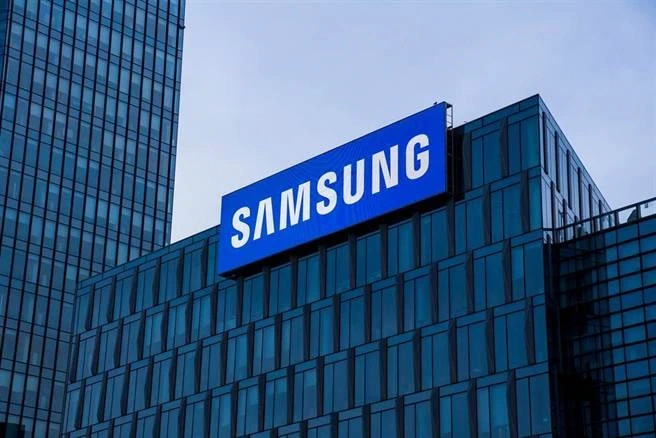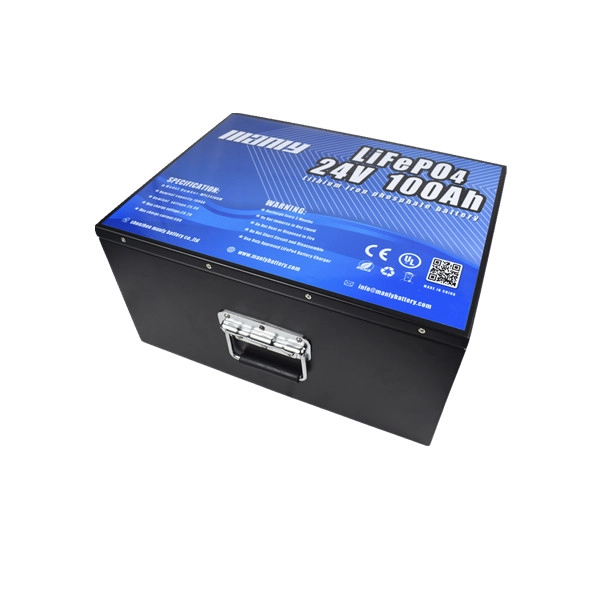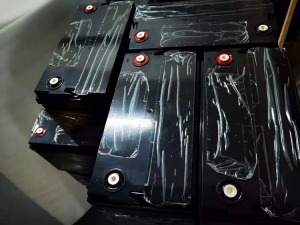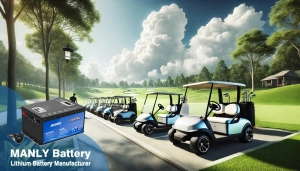The welcome robot is a high-tech exhibit that integrates speech recognition technology and intelligent motion technology. The robot is humanoid, and its height, body shape and expression are all striving to be lifelike, kind, cute, beautiful, generous, and lifelike. A sense of humanization.


 Selecting the right battery is vital for the efficient functioning of a robot. Factors such as capacity, discharge rate, lifecycle, and cost should guide your decision. Among the top manufacturers, MANLY Battery offers a competitive edge with its high-capacity, reliable, and affordable LiFePO4 batteries. However, the choice ultimately boils down to the specific requirements of your robotic application.
Selecting the right battery is vital for the efficient functioning of a robot. Factors such as capacity, discharge rate, lifecycle, and cost should guide your decision. Among the top manufacturers, MANLY Battery offers a competitive edge with its high-capacity, reliable, and affordable LiFePO4 batteries. However, the choice ultimately boils down to the specific requirements of your robotic application.
Functions of Welcome Robot
Table of Contents
- Functions of Welcome Robot
- Different Types Of Welcome Robot
- The Power Drive: Top Batteries for Robotics
- The Lifeline of Robotics - The Battery
- Types of Robot Batteries
- Leading Producers of Batteries
- What is the Best Battery for Solar Street Lights?
- Germany Customer 300pcs 12V 80Ah Lithium Battery For Solar System Ready For Shipment
- How Long Do Lithium Golf Cart Batteries Last
- U.S. Fuel Rules 2027-2032: The Stricter Shift
Autonomous welcome:
place the robot on the venues, hotels, shopping malls and other activities and promotion sites. When guests pass by, the robot will take the initiative to say hello: "Hello! Welcome." When the guests leave, the robot will say: "Hello, welcome. next visit".Welcome speech:
The exhibition robot can deliver a "welcome speech" to the guests on the stage and on the spot. The "welcome speech" can be formulated by the user first, and then expressed through the robot's unique voice effect after programming input.Action display:
During the exhibition, the robot can perform talent shows such as singing, storytelling, and reciting poetry. The robot is also equipped with head, eye, mouth, and arm movements to fully demonstrate the entertainment function of the robot.Human-machine dialogue:
The robot has the most advanced speech recognition function in today's technology. On-site guests can use the microphone to ask many questions to the robot. The content of the dialogue can be formulated according to the user's needs, and the robot answers the guests' questions in humorous language. Through man-machine dialogue, the content of this event or celebration can be fully displayed to the on-site guests, and at the same time, the participation and entertainment of the guests can be increased, and a good interactive effect can be produced.Different Types Of Welcome Robot
In the ever-evolving landscape of robotics, welcome robots have emerged as fascinating and practical solutions to enhance guest experiences and provide efficient customer service. Designed to greet and assist visitors, these robots combine cutting-edge technology, friendly personalities, and a wide range of capabilities. In this article, we will introduce you to various types of welcome robots, showcasing their unique features and applications.Reception Robots
Reception robots specialize in front-desk and reception duties, making them indispensable in hotels, corporate offices, and other establishments. These robots are designed to welcome guests, manage check-in processes, and provide essential information about the facility. Reception robots often come equipped with touchscreens or voice interfaces, allowing visitors to access real-time updates on schedules, room availability, amenities, and local attractions. By automating the check-in process and handling routine inquiries, reception robots enhance efficiency and ensure a seamless arrival experience for guests.
Service Robots
Service robots are the epitome of efficiency and practicality when it comes to welcoming guests. These robots excel in tasks such as providing directions, answering frequently asked questions, and offering assistance with luggage or personal belongings. Equipped with advanced navigation systems, sensors, and mapping technology, service robots can autonomously navigate complex environments such as airports, shopping malls, and hotels. They ensure a smooth and hassle-free experience for visitors, saving time and reducing the workload of human staff.Social Robots
Social robots are designed to create engaging and interactive experiences for visitors. These robots possess the ability to recognize and respond to human emotions, making them ideal companions for individuals in various settings. Social robots greet visitors with personalized messages, engage in conversations, and even showcase expressive gestures and facial expressions. With their natural language processing capabilities, they can hold meaningful dialogues, share information, and provide entertainment. Social robots are particularly effective in environments such as museums, exhibitions, and public spaces, where they offer a unique blend of companionship and amusement.
Multilingual Robots
Multilingual robots are specifically programmed to overcome language barriers and cater to a diverse range of visitors. These robots possess advanced language translation capabilities, enabling them to communicate with guests in their native language. By offering real-time translation services, multilingual robots facilitate effective communication, provide information, and create a welcoming environment for international visitors. They are particularly valuable in tourist destinations, international conferences, and global events.Guiding Robots
Guiding robots excel in providing navigational support and information to visitors in large spaces like museums, exhibitions, and airports. Equipped with cameras, sensors, and mapping technologies, these robots can guide guests to specific locations, offer information about exhibits or points of interest, and even narrate historical or educational content. Guiding robots enhance the overall visitor experience by offering personalized and interactive tours, ensuring guests have a memorable and enriching time.Hospitality Robots
Hospitality robots are designed to enhance the overall experience of guests staying in hotels or resorts. These robots can perform a variety of tasks, such as delivering amenities, providing weather updates, managing room controls, and even entertaining guests with games or multimedia content. With their ability to interact and adapt to individual preferences, hospitality robots create a unique and personalized experience, ensuring guests feel valued and cared for throughout their stay.Informational Robots
Informational robots act as knowledgeable assistants in public spaces, helping visitors with inquiries and providing relevant information. Equipped with vast databases, these robots can answer questions about nearby attractions, transportation schedules, restaurant recommendations, and other local information. By offering accurate and up-to-date information, informational robots become invaluable resources, empowering guests to explore new places confidently.The Power Drive: Top Batteries for Robotics
Robotics is a fast-growing field that requires highly efficient power sources. As the heart of any robot, the battery greatly influences a robot's performance, lifespan, and capabilities. Therefore, choosing the right robot battery is critical. This article aims to guide you through the complex world of batteries for robotics, highlighting top manufacturers, including MANLY Battery.The Lifeline of Robotics - The Battery
Robots are no longer just characters in science fiction movies. They have invaded every sector, from manufacturing and healthcare to education and home automation. Powering these machines are batteries, the lifeline that sustains their operations.The main factors to consider while selecting robot batteries include:- Capacity: Measured in ampere-hours (Ah), it denotes how much power a battery can store.
- Discharge Rate: It shows how quickly a battery can deliver power.
- Lifecycle: It indicates the number of charge and discharge cycles a battery can go through before its capacity falls below 80%.
- Price: The cost of the battery is essential, especially for those looking for cheap LiFePO4 batteries.
Types of Robot Batteries
There are several types of batteries used in robotics, with each type having its unique characteristics. They include:- Lithium-ion (Li-ion) Batteries: These batteries offer high energy density and long lifecycle but can be expensive.
- Lithium Iron Phosphate (LiFePO4) Batteries: These are cheaper than Li-ion batteries, have a longer lifespan, and are safer due to their thermal and chemical stability.
- Nickel-Metal Hydride (NiMH) Batteries: While cheaper, these batteries have a lower capacity and shorter lifecycle than lithium batteries.
- Lead-Acid Batteries: These are the cheapest but have the lowest energy density and the shortest lifecycle.
Leading Producers of Batteries
In the vast world of battery technology, there are some manufacturers that truly stand out due to their innovation, quality, and reliability. Here's a look at some of the top battery producers:- Duracell: As a household name, Duracell offers a vast selection of battery types, known for their longevity and reliability. From standard alkaline batteries to rechargeable solutions, Duracell products are trusted worldwide.
- Energizer: Another recognizable name in the market, Energizer provides a wide array of battery types. Notable for their high-energy output and long-lasting performance, Energizer batteries are commonly used in various applications, including robotics.
- Samsung SDI: A prominent player in lithium-ion technology, Samsung SDI provides high-quality, energy-efficient batteries. They are also making significant strides in the renewable energy sector with their innovative solutions.

- LG Chem: Focused on providing advanced energy solutions, LG Chem offers high-capacity lithium-ion batteries known for their efficiency and durability. They also contribute significantly to electric vehicle (EV) technology with their state-of-the-art EV batteries.
- MANLY Battery: Over a decade of industry experience, is renowned for its customized, high-quality solutions. Their products come with an impressive 10-year warranty, standing as testament to their commitment to quality and longevity. The company prides itself on rigorous factory inspections before shipping. Moreover, Manly Battery's product line boasts remarkable features such as overvoltage and overcurrent protection, as well as resilience to significant impacts. Their Lifepo4 batteries are specially designed for easy integration, serving as a drop-in replacement for lead-acid batteries.
 Selecting the right battery is vital for the efficient functioning of a robot. Factors such as capacity, discharge rate, lifecycle, and cost should guide your decision. Among the top manufacturers, MANLY Battery offers a competitive edge with its high-capacity, reliable, and affordable LiFePO4 batteries. However, the choice ultimately boils down to the specific requirements of your robotic application.
Selecting the right battery is vital for the efficient functioning of a robot. Factors such as capacity, discharge rate, lifecycle, and cost should guide your decision. Among the top manufacturers, MANLY Battery offers a competitive edge with its high-capacity, reliable, and affordable LiFePO4 batteries. However, the choice ultimately boils down to the specific requirements of your robotic application. 


















